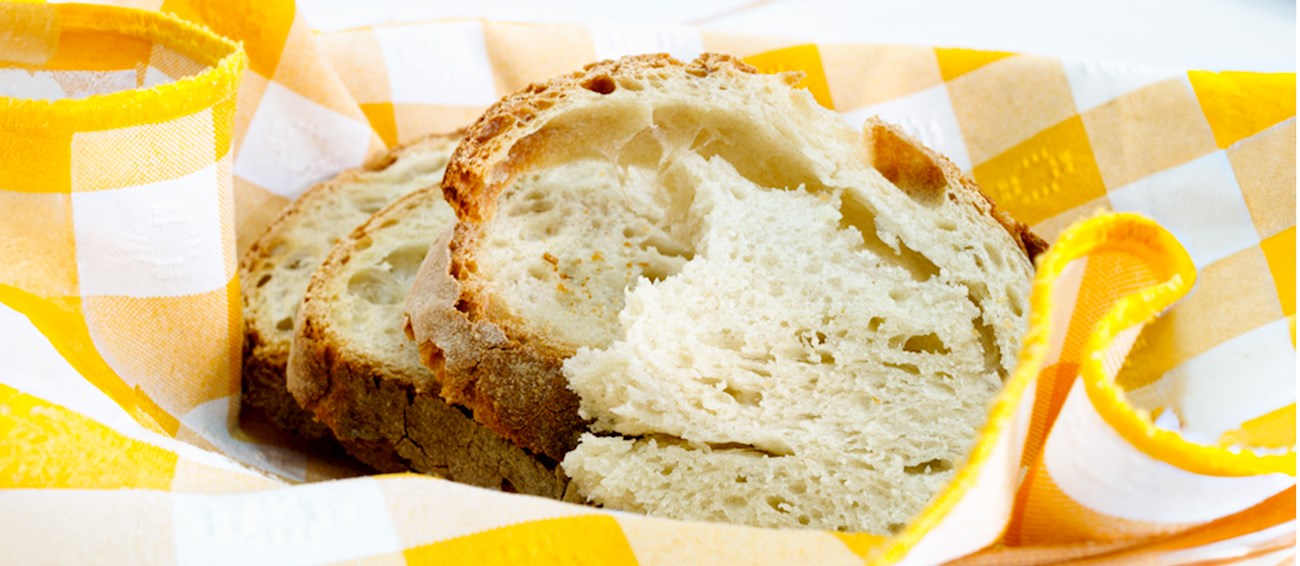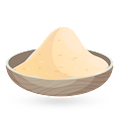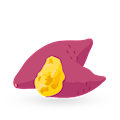MAIN INGREDIENTS
Hailing from Madeira, this rustic, leavened bread is prepared with wheat flour, mashed sweet potatoes, water, and salt. Traditionally baked on large basalt stone slabs, bolo do caco is typically flat and round, though it can vary in size. It is the most common bread variety on Madeira that is usually served as a warm appetizer with garlic butter spread, but it can also be enjoyed as a sandwich or an accompaniment to various traditional Portuguese dishes.
MAIN INGREDIENTS
Pão alentejano refers to a traditional Portuguese bread originating from the Alentejo region of Portugal. Recognized for its round shape and distinctive crust, this bread is made with a mix of different types of wheat flour and sometimes incorporates a sourdough starter, which lends it a slightly tangy flavor.
Its thick, rustic crust contrasts beautifully with the soft, airy crumb inside. The bread's unique taste and texture make it a perfect accompaniment to Portuguese meals, particularly when paired with cheeses, olives, or the region's famed cured meats.
Bolo lêvedo is a traditional bread originating from the Azores. These sweet muffins are made with a combination of water, flour, sugar, eggs, butter, salt, milk, and yeast. The dough is shaped into small balls that are dusted with flour, then cooked over low heat.
As soon as one side turns golden brown, bolo lêvedo is turned over and cooked on the other side. They're best served hot, then slathered with butter or fruit jams. It's recommended to pair them with a cup of coffee on the side.
Folar de Chaves is a traditional stuffed bread. It is made with leavened dough that incorporates a hefty amount of eggs, lard or butter, and olive oil. The fillings may vary, but they usually include cured or smoked pork products such as presunto (ham), sliced sausages, or bacon.
The bread is traditionally prepared for Easter, but it is also commonly made for other festivities and various special occasions. As it is evident from the name, it originates from Chaves, but nowadays it is popular throughout the country.
This traditional Portuguese Easter bread consists of flour, eggs, and local Trás-os-Montes olive oil. It is traditionally filled with various pork products such as pork meat, bacon, sausages, ham, or shredded pork shoulder. Folar was first mentioned in print in 1959, and in 2016 it has been awarded the Protected Geographical Indication status by the European Commission.
Though it is traditionally associated with Easter, this delicacy is also commonly enjoyed on various special occasions.
Broa de milho is a Portuguese corn bread consisting of plain flour, cornmeal, yeast, water, milk, sugar, salt, and butter. It is characterized by its fine, moist texture, making it an ideal pair for soups and stews, when it is often used for dipping.
The bread is especially popular in Northern Portugal and the Azores. In the past, broa de milho was considered a poor man's food, but today it is enjoyed by all tiers of society.
Broa is a Portuguese bread made from yellow cornmeal, yeast, and a combination of wheat and rye flour. It is characterized by a thick crust on the exterior, and a tender, moist texture of the interior. Broa is also quite popular in Galicia and Brazil, where it is typically seasoned with fennel seeds.
It was first baked by peasants in the mountainous regions of northern Portugal, who made their living by cultivating corn. Although broa is an integral part of a traditional Portuguese breakfast, it is also often served at the beginning of the meal with a traditional Portuguese soup called caldo verde.
Broa de Avintes is a dark Portuguese bread with a dense texture and an intense, bittersweet flavor. It consists of white corn flour, yellow corn flour, rye flour, malt flour, hot water, yeast, and salt. The bread is considered to be a comfort food staple in the north of Portugal, and it is often served with sweet jams, soups, and grilled fish dishes.
MAIN INGREDIENTS
Papo secos, also known as Portuguese rolls, are light and airy bread rolls popular in Portuguese cuisine. These rolls are made from common bread ingredients including yeast, sugar, flour, salt, water, and butter, with a little milk brushed on top before baking.
In Portugal, these rolls are ubiquitous in bakeries and homes and are often referred to as carcaça. They are distinguished by their oblong shape and a characteristic crease down the middle, making them perfect for sandwiches, toasties, or as a delicious accompaniment to meals, especially the famous bifanas, which is a type of Portuguese sandwich.
TasteAtlas food rankings are based on the ratings of the TasteAtlas audience, with a series of mechanisms that recognize real users and that ignore bot, nationalist or local patriotic ratings, and give additional value to the ratings of users that the system recognizes as knowledgeable. TasteAtlas Rankings should not be seen as the final global conclusion about food. Their purpose is to promote excellent local foods, instill pride in traditional dishes, and arouse curiosity about dishes you haven’t tried.









